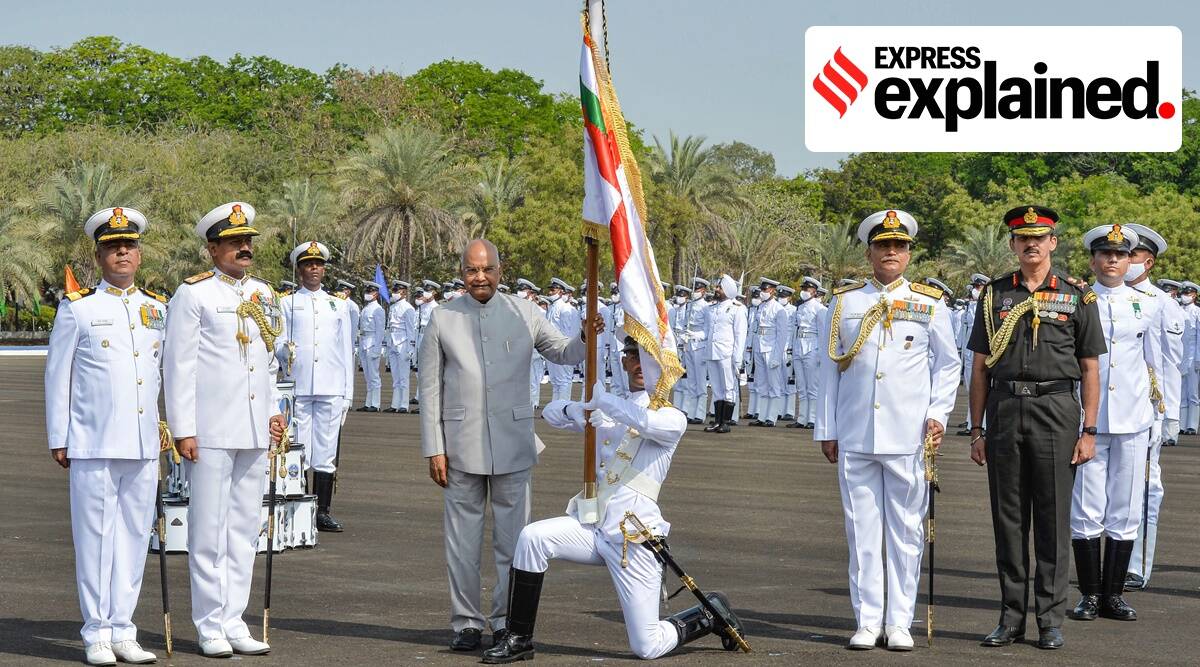President’s Colours

Copyright infringement is not intended
Context: Carrying on with the age-old tradition, President Ram Nath Kovind presented the President’s Colours to the Indian Naval Ship (INS) Valsura in Jamnagar, Gujarat.
- The Valsura is a naval training establishment specialising in electrical, electronics, weapon systems and information technology-related fields.
What is the tradition?
- Origin of Colours in the military:
- In ancient India, the armies of various Kings carried the ‘Dhwaj’ or the flag whenever it went into a battle. That is an equivalent to the Colours of today.
- In India, as well as many Commonwealth nations, the tradition of Colours has been drawn from the British Army.
- Traditionally, there have been four kinds of insignia associated with Colours —Standards, Guidons, Colours and Banners.
- The Infantry regiments, army establishments, and Naval and Air Force units are all awarded Colours by the President while the Armoured Regiments are awarded the Standards.
- The only exception is the Regiment of Artillery. In Artillery, the guns are considered to be the Colours and losing a gun in battle is akin to losing the Colour of the entire regiment.
What is a Standard?
- In the ages, the Standard was the largest flag flown by the Armies.
- As the name implies, it was supposed to ‘Stand’ in one place.
- The practice of carrying a Standard to mark the position of the Commander originated in Egypt more than 3,000 years ago. The practice was formalised in the medieval armies of Europe.
- The last time Colours were carried into battle was on January 26, 1881, during the Boer War in South Africa.
What happened to the Colours that the Indian military used before Independence?
- On November 23, 1950, the King’s Colours of the pre-Independence era Army were ‘laid to rest’ at the Indian Military Academy (IMA) in Dehradun. Thirty-five Colours, including those belonging to the Navy.
- On April 6, 1956, 17 more Colours belonging to the State Forces of the erstwhile Royal States of India were laid to rest at IMA Dehradun.
https://indianexpress.com/article/explained/regimental-colours-of-indian-army-its-importance-history-7836159/



1.png)
